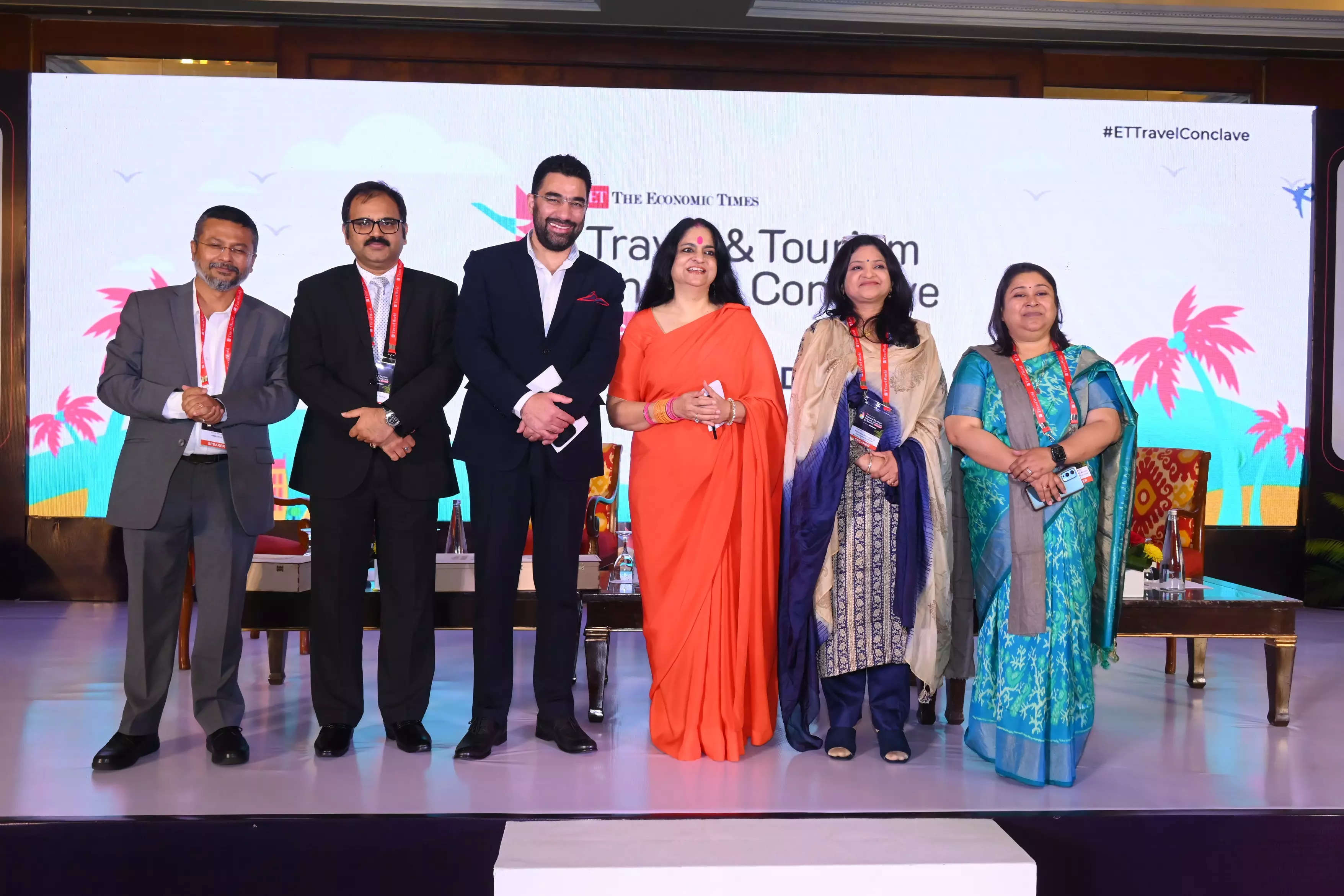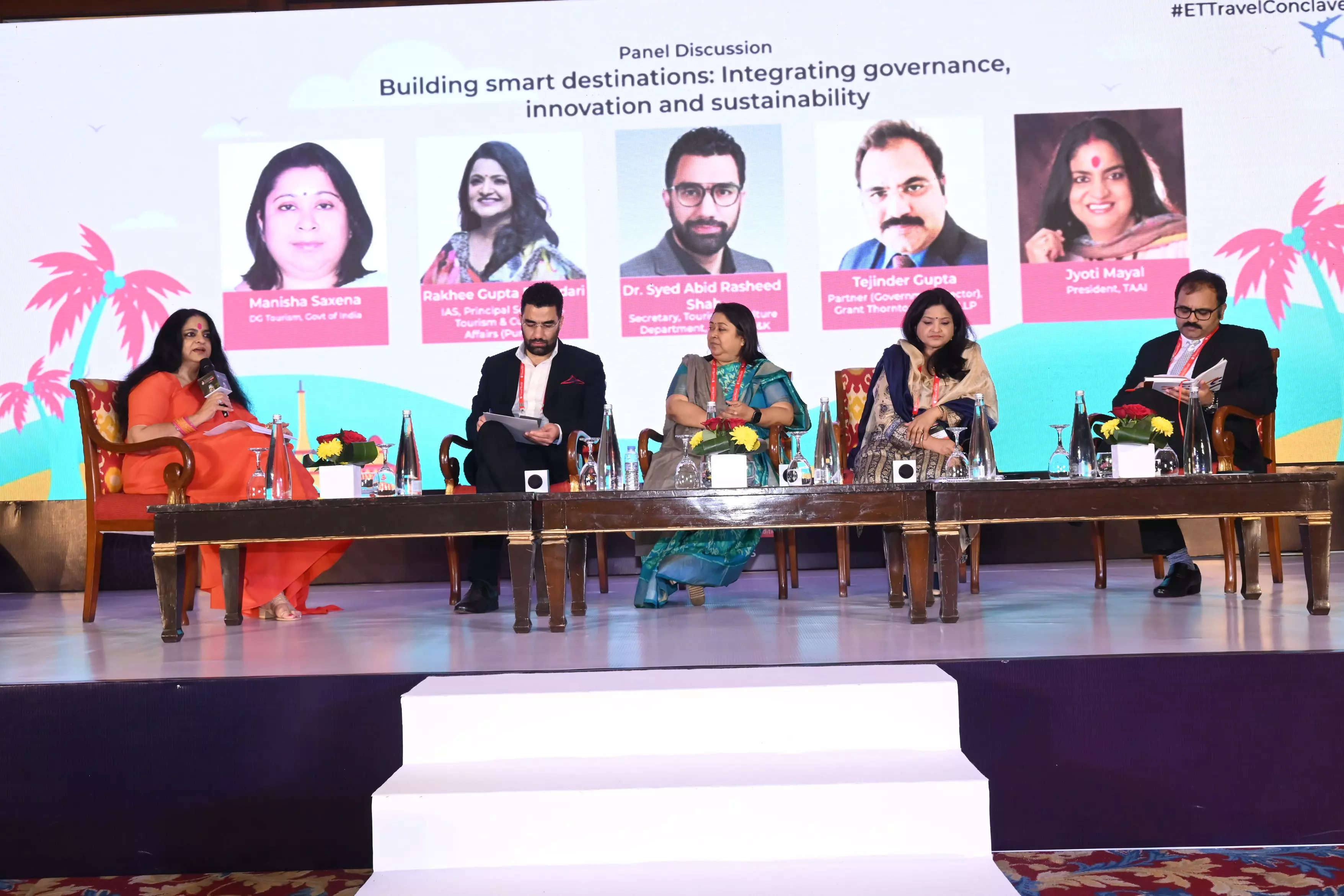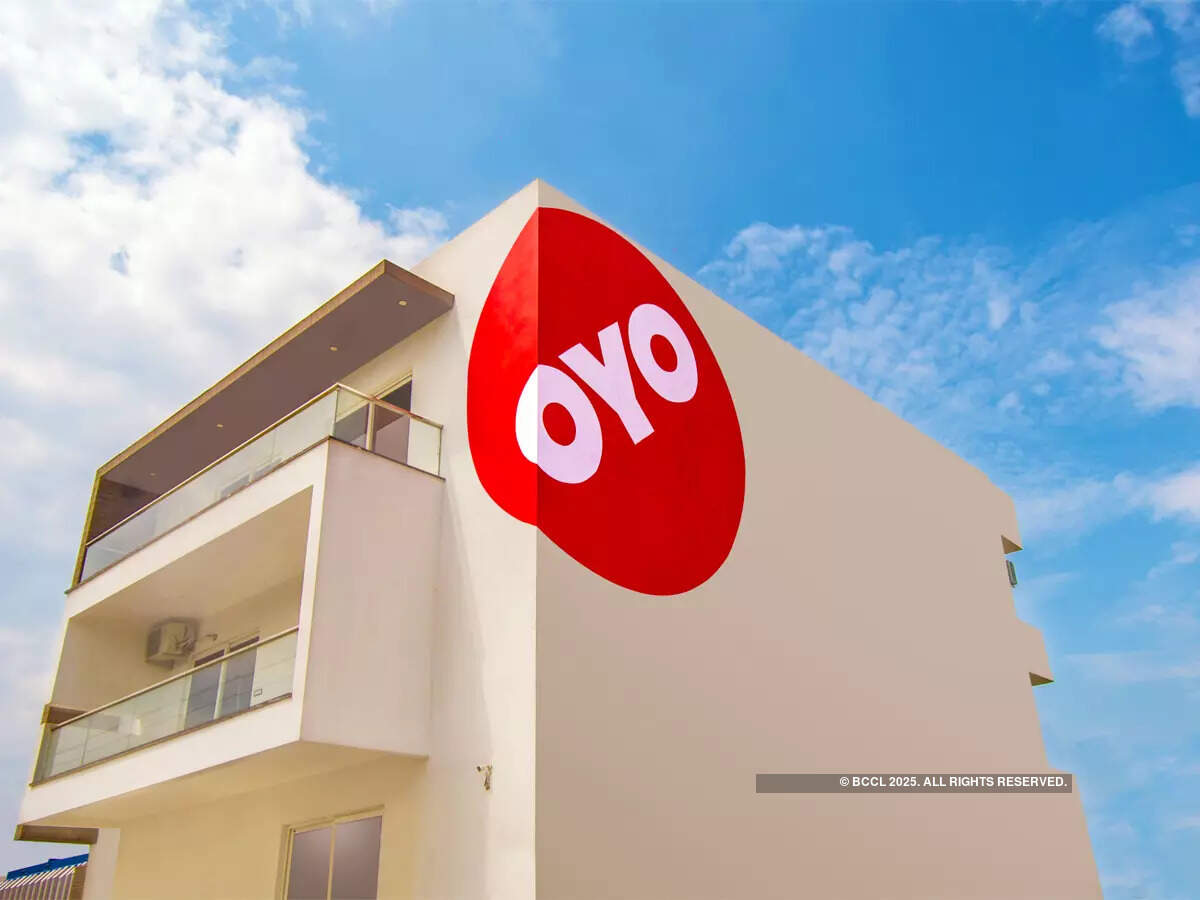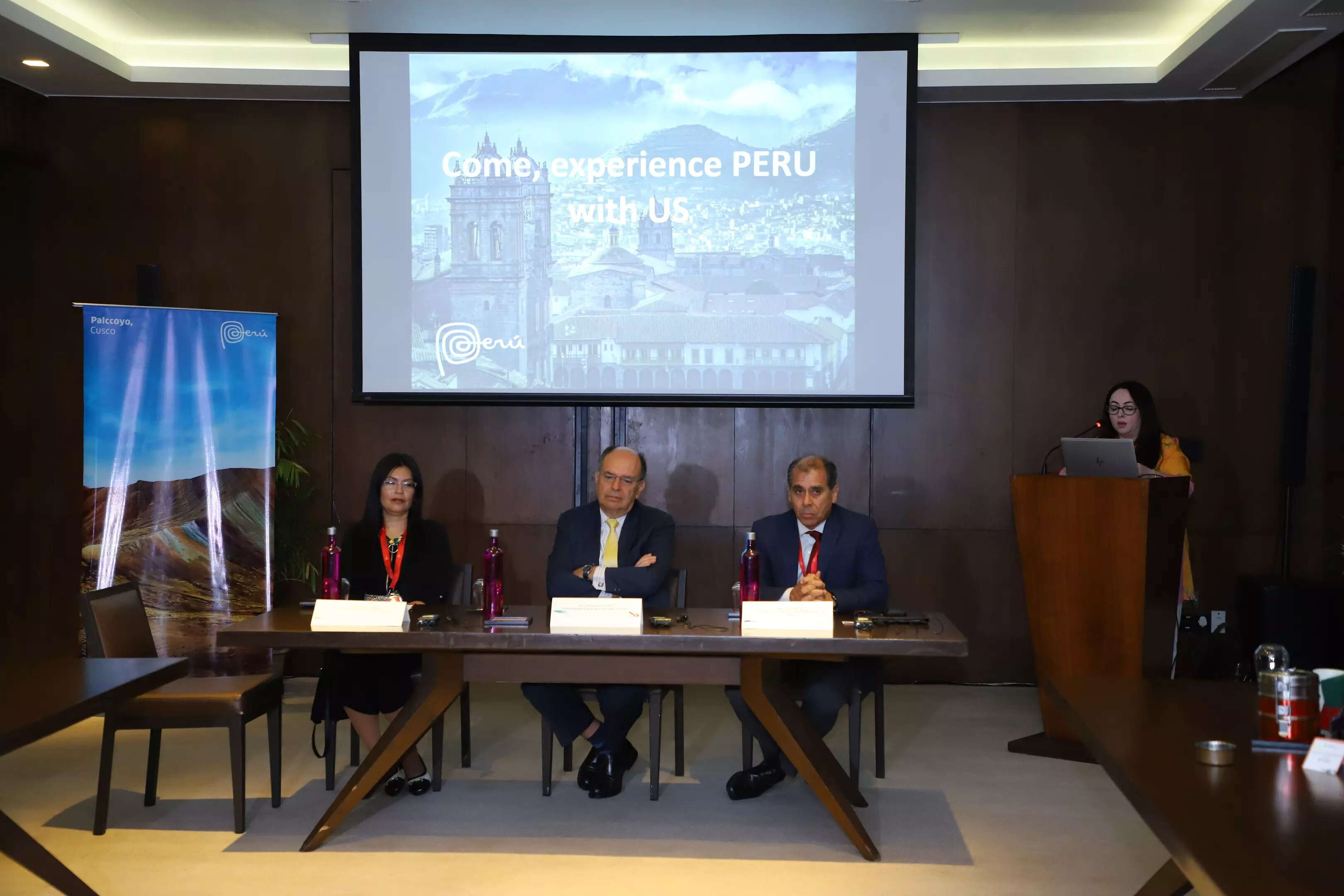
In a discussion bringing out the intricacies of building smart destinations, the panel at the 2nd edition of Economic Times Travel & Tourism Conclave & Awards, delved into the importance of governance, innovation, and sustainability acting as the cornerstone for crafting efficient and sustainable tourism ecosystems. The insights shared by the expert panelists turned the spotlight on the multifaceted approach required to steer tourism towards sustainability as well as economic prosperity.
Spearheading the discussion, the panel moderator & President of TAAI (Travel Agents Association of India), Jyoti Mayal, emphasised the complex synergy required among stakeholders—governments, businesses, and local communities—to actualise the concept of smart destinations. For her, the combo of governance, innovation, and sustainability forms the bedrock.
“We’re talking about establishing clear governance structures that drive collaboration and coherence among stakeholders. That involves crafting supportive policies, fostering data management frameworks, and more. Innovation, a key driver, prompts the development of technologies improving tourism experiences while preserving sustainability. The integration of governance, innovation, and sustainability is the key to crafting smarter, more sustainable, and resilient destinations,” she stated, throwing open the floor for the panelists.
Adding to this, Manisha Saxena, DG Tourism, Government of India highlighted that the destination management involves making a place attractive, accessible, and eco-friendly while also engaging local communities.
“From planning to social media posts, tourists encounter at least 20 checkpoints, including transportation, cleanliness, local experiences, and safety. Engaging locals not only offers authentic experiences but also makes economic sense. Yet, challenges persist—ensuring diverse experiences, security, and seamless operations,” she said.
“At the Ministry of Tourism, we aim to collaborate with the other ministries with an aim to unveil 50 new destinations (as announced in the budget) in a challenge mode that are exciting, accessible, and safe,” she added.
Jammu and Kashmir, now a prime tourist destination, has experienced a remarkable shift in inbound tourism, especially after the G20. With a staggering count of 1.88 million domestic tourists in 2022, it’s evident that its allure is on the rise. Amidst this surge, the region is pivoting towards sustainable growth, attributing much of this success to the rise of homestays in the popular and newly identified regions facilitated by the homestay policy introduced last year, said Dr. Syed Abid Rasheed Shah, Secretary of the Tourism & Culture Department, Govt of J&K.
“Presently, around 15,000 homestay beds are operational, with an additional 5,000 beds in the development pipeline, totaling an impressive 20,000 beds. These homestays have sparked a remarkable transformation in areas like Gurez and Karnah, drawing visitors and fostering unique experiences in these border regions. Notably, one of these destinations witnessed a significant surge of nearly one lakh visitors post our targeted marketing efforts,” he shared.
However, he cautioned about an impending challenge, given the fact the tourist numbers are rising in J&K. “The imminent issue lies in managing the growing number of visitors—the carrying capacity. This is where these homestays are helping us shift the crowd to lesser known regions.”
“From a sustainability standpoint, these homestays stand as one of J&K government’s most impactful interventions, a resounding success in our pursuit of sustainable tourism,” stated Shah.
Representing Punjab on the panel, Rakhee Gupta Bhandari, Principal Secretary, Tourism & Cultural Affairs (Punjab) articulated that the state’s evolving tourism landscape and emphasis on involving local populations has started to bear fruits for the sector. “Engaging with the community has proven to be a pivotal step for us, stirring enthusiasm among the locals and presenting promising economic prospects,” she said.
She stated that tourism serves as the state’s promotional engine, which helps in attracting investments and creativity. “Going forward, our focus extends beyond the conventional narrative of religious landmarks. Amritsar, which already is a renowned religious spot and has got a push after the G20. We’re not merely branding it as a marriage hub or a religious place; it’s a place of celebration open year-round for various occasions,” she said.
“Moreover, we’re amplifying the appeal of border tourism, uncovering places like Sadki, Hussainiwala, and points beyond the Atari border. We’ve curated themes around these circuits and also promoting adventure sports post the policy launch,” she added.
“Having closely collaborated with governments, particularly in the domain of tourism, my initial reflection on crafting smart and sustainable destinations veers from the conventional tech-oriented perspective. It commences right from the moment an individual steps into an airport, encapsulating the essence of the holiday experience. The crux lies in nurturing lasting impressions and emotions that travellers carry back home,” stated Tejinder Gupta, Partner (Government Sector), Grant Thornton Bharat LLP, drawing on his governmental experience.
Sustainability, he added, becomes the cornerstone here, allowing for repeated experiences. “For instance, initiatives like ‘Travel for Life’ underscore the importance of responsible consumer behaviour. The infrastructure, on the other hand, is also a pivotal element and needs to be sensibly utilised. However, creating infrastructure isn’t the end; efficient operations and maintenance play a critical role. The private sector has a significant role here, engaging in CSR initiatives and collaborations like the ‘Adopt a Heritage’ scheme, illustrating the engagement between public and private sectors,” Gupta stated, while listing suggestions.
Stakeholder involvement: the crux of success
The panel discussion unanimously upheld stakeholder involvement as an indispensable tool needed to create and manage smart destinations.
When asked, Shah emphasised that policies must stem from consultative mechanisms with stakeholders. “To envision a successful policy, one mustn’t overlook the inputs and involvement of those who drive the industry. If overlooked, it can be a recipe for complete disaster. Every intervention we’ve undertaken—be it formulating a houseboat policy or revising our tourism framework—was crafted significantly through stakeholder inputs and involvement of relevant associations. Policies must reflect collective insights to thrive,” he suggested.
“While governments transition, stakeholders remain constant, perpetuating the sector’s growth. Thus, incorporating industry recommendations becomes pivotal,” Shah asserted.
Echoing similar thoughts, Bhandari asserted that the Punjab government’s approach has always involved stakeholders. “Working independently in tourism is impossible for Punjab as involving stakeholders comes naturally to us. Now, the key is to drive change by urging stakeholders to act as catalysts.”
“For us to truly flourish, we seek collaborative support—from the Indian government to every stakeholder invested in our success. Stakeholders’ success is also pivotal for the government’s sustainability, ensuring mutual benefit while preventing collapse and creating a win win situation for both ends,” she added.
Gupta said that local community engagement stands as a pivotal factor in the decision-making process. “We must ensure that the choices formulated at a higher level resonate at the grassroots, prioritising sustainability throughout. Harnessing local resources to actualise this vision becomes imperative in crafting a sustainable tourism experience.”
Saxena stated that while the Ministry of Tourism has been actively implementing strategies to involve stakeholder recommendations through various mechanisms like approach papers and policy drafts, she pointed that these consultations largely remain at a broader scale. “It’s crucial to delve deeper, establishing pockets of excellence, where tangible efforts demonstrate real impact.”
“Our goal eventually is to transform destinations collectively with government, private stakeholders, and communities—creating masterpieces resonating across multiple locations. For instance, during my tenure at Mizoram Tourism, we initiated a digital platform for Thenzawl, which was one of the sanctioned Swadesh Darshan projects. We ensured the attractions listed there were not just icons on a page but actual experiences delivered by locals on the ground. This seamless model, I would urge, should be replicated across destinations for an authentic traveller experience,” she suggested.

Need for democratising tourism, notching up digital presence & word-of-mouth marketing
To shape the paradigm of smart destination development, Shah highlighted the need to democratise tourism. “It’s vital to engage communities in this regard. Restricting the sector to higher levels isn’t productive; we need to bring it to the grassroots. This way, locals feel the economic benefits, making tourism more inclusive and impactful for everyone involved,” he said.
Connectivity, said Bhandari, is a critical factor. “It’s about being visible, accessible, not just digitally but through robust air connectivity too. Prioritising this fosters a two-way flow of information, making it a win-win for all involved in tourism’s growth. It’s the cornerstone.”
Gupta emphasised the significance of e-marketing and word-of-mouth in attracting foreign tourists. He emphasised the role of these tourists as advocates, promoting destinations upon their return.
Saxena reiterated the significance of sustainability for longer term benefits, quoting the Mizoram Tourism’s pledge: “When I explore new places, I will leave nothing but footprints, and take away only memories.”
Summing up the discussion, Mayal emphasised the importance of ‘quality, reliability, credibility, and collaboration with stakeholders’. She also stressed on the role of sustainability and the need to invest in this space to drive credible growth within the tourism industry.
[ad_2]
Source link
Travellers today want to know other cultures, sports, and with economies becoming a global subject, business leaders want to meet other leaders across the globe. With this, tourist destinations as well as the entire industry must come together to offer quality experiences. This fusion, fortified by technology’s prowess, has the potential to provide the much-needed boost to many states’ economy.
[ad_2]
Source link ]]>

With the festive and winter tourism season approaching, OYO is gearing up to expand its footprint in India’s prime leisure markets. The company has set its sights on adding 750 hotels in the next three months, spanning across 35+ leisure destinations. Among these, significant emphasis will be placed on key markets such as Goa, Jaipur, Mussoorie, Rishikesh, Katra, Puri, Shimla, Nainital, Udaipur, and Mount Abu.
The majority of these new hotels will be incorporated under OYO’s premium brands, including Palette, Townhouse, Townhouse Oak, and Collection O. This expansion is aimed at providing travellers with an array of superior options.
To further empower potential hotel owners in these strategic markets during the upcoming tourism season, OYO has introduced the ‘Excellence Network Program.’ This program offers a range of benefits to hotel owners to meet the demand dynamics of the peak season, including access to OYO’s extensive network of guests, priority listing on the OYO app, and competitive commission rates.
According to a recent government report, the number of foreign tourists who visited India during January-June this year increased by 106 per cent compared to the corresponding period in 2022. With the approach of the autumn-winter high season, these numbers are expected to rise further. This high season, which typically spans from October to January, witnesses a surge in both domestic and international tourists, making it a crucial period for the tourism and hospitality industry.
OYO has already experienced a 28 per cent increase in advance bookings across all major leisure markets compared to the same period last year. OYO’s expansion in these markets comes at an opportune time, allowing travellers to maximize their vacations while creating a positive impact on the local economy and communities.
Anuj Tejpal, Chief Merchant Officer at OYO, commented on the expansion, stating, “As we head towards one of the most important seasons for tourism, it is heartening to see the number of foreign travelers increase in India after the Covid lull. With our ‘Excellence Network Program,’ we want to provide hotel owners with a competitive edge and the necessary support to make the most of this opportunity. Our expansion in these leisure markets also aligns with our mission to provide quality accommodations and memorable experiences to travelers. The influx of new hotels will not only boost tourism but also provide employment opportunities for local communities.”In addition to its expansion, OYO has introduced a ‘Stay Now Pay Later’ (SNPL) option to provide travellers with more flexibility when planning their trips. SNPL offers customers a credit limit of up to INR 5,000, which can be settled after 15 days of their stay.
[ad_2]
Source link

For tourism, Peru is eyeing the Indian market with renewed vigour, anticipating a return to pre-pandemic levels of visitors by the end of the year.
From approximately 1,500 Indian visitors back in 2014, when Peru’s trade office in India was established, to 10,000 when the Covid-19 crisis struck, Peru hasn’t really struck big where India’s total outbound tourism is concerned. But, as per Luis Cabello, Economic & Commercial Counsellor in the Peruvian Embassy, “India is back on the Peruvian tourism map.”
“We see the numbers of Indian visitors to Peru steadily increasing. It is expected that by the end of the year, they will approach the levels seen before the pandemic,” assured Cabello. Looking ahead, he noted, “For next year, we aim to welcome at least 50 percent more tourists. India is a key market for us, and we plan to reestablish our presence here.”
To achieve this goal, the Commission for the Promotion of Peruvian Exports and Tourism (PROMPERU), the official tourism promotion board of Peru, is embarking on a two-city roadshow in India. This event, spanning New Delhi and Mumbai, seeks to engage with a minimum of 50 potential Indian travel companies in each city. The roadshow (held on October 13 in Delhi & October 16 in Mumbai) has workshops and will be a key platform for fostering partnerships, enhancing lead generation, and educating Indian travellers about the opportunities that await them in Peru.
The roadshow follows a pre-fixed meeting format, with each travel agent granted 15 minutes of one-on-one interaction. “Followed by these roadshows in India, we plan to participate in other major international tourism trade shows within the market. We’re also planning to organise another roadshow next year to engage more Peruvian DMCs, along with businesses in the tourism sector, such as hotels, restaurants, and international airlines,” Cabello announced.
Speaking during the roadshow launch event, Javier Manuel Paulinich Velarde, Ambassador of Peru to India, emphasised the significance of the year as it marks 60 years of diplomatic relations between Peru and India. “Among the various activities and initiatives we’ve undertaken, a central focus is the recent resumption of negotiations on a trade agreement. Peru has now become a key priority for India, and this agreement encompasses vital sectors, including investment services and tourism. This presents a unique window of opportunity to bolster our relationship with India,” he said.
Catering to evolving preferences
Diving further into statistics, Cabello shared that the Indian travellers are projected to spend nearly USD 2 billion on international travel, and by 2025, this number could reach USD 42 billion. “With this, we expect Indian travellers to explore more of Peru beyond Machu Picchu, including places like Colca Canyon, UNESCO-listed Nazca Lines, Puno, Arequipa and more.”
Another notable aspect here is that the Indian travellers have evolved into more discerning and adventurous explorers seeking new experiences, and Peru offers a plethora of such experiences to offer, asserted Cabello. “The focus is now on tapping into this specific market. Rather than being concerned about becoming an overcrowded destination, the goal is to market Peru as a unique destination packed with different experiences for these travellers.”
In places like Cusco and Puno, the itineraries engage passengers with local communities. They experience local food, visit farms, even participate in everyday activities, learn about their traditions and use their tools. “We cater to passengers’ preferences, offering various ways to immerse in our culture. Festivals in Cusco are another great opportunity for international visitors to connect with locals. Additionally, in different regions, tourists can learn about Peruvian cuisine, preparing national dishes like ceviche in Lima and more alike. Our aim is to ensure the involvement of local communities while promoting unique forms of tourism,” he added.
He also highlighted India’s profound interest in gastronomy, adding that Peru boasts a number of Indian restaurants featuring Indian chefs who cater to the specific demands of Indian tourists. An interesting revelation from a PROMPERU presentation, also noted that by 2023, an estimated 277,651 foreign tourists are expected to travel to Peru, with one of their primary motivations being the opportunity to savour its delectable cuisine.
Notably, gastronomy ranks as the third most compelling reason to visit Peru, trailing only behind the allure of Machu Picchu and the desire to delve into the country’s rich culture and history.
Visa & connectivity
The ease of the visa process is another encouraging factor for Indian travellers to choose Peru, assured Cabello. Those with Australian, UK, US, or Schengen visas with a six-month validity do not require an additional visa to visit Peru. Even for those who do need a visa, the Consular Section processes visa applications promptly, typically within five working days. Furthermore, Peru offers online interviews for added convenience, simplifying the process for Indian tourists.
In regard to flight connectivity, Cabello noted that there are currently no direct flights from India to Peru. However, there are direct flight options from European cities to Peru, which is advantageous as it eliminates the need for a transit visa.
“We are currently in advanced discussions with multiple airlines, with a particular focus on those preferred by Indian travellers for international journeys,” Cabello hinted, acknowledging India’s strong preference for airlines like Emirates and Qatar Airways.
He further emphasised the significance of trade agreements with India, which are expected to bolster connectivity in both directions. “As we become more active in the tourism industry and marketing, we aim to establish more direct flight routes connecting India and Peru,” he expressed.
Additionally, he highlighted that the recent announcement of LATAM launching direct flights from London to Lima on December 2 will be a significant enhancement in terms of connectivity.
[ad_2]
Source link

The latest forecasts from American Express Global Business Travel (Amex GBT), consulting suggest that hotel rates are poised to continue their upward trajectory in 2024 across most global destinations. This trend is anticipated even as leisure travel demand is expected to soften.
The Hotel Monitor 2024 report, based on a comprehensive analysis of millions of hotel transactions and International Monetary Fund (IMF) economic data, predicts that several cities may see substantial rate increases of up to 17.5 per cent due to a combination of tight supply and local conditions driving room costs higher.
Most cities are expected to witness rate increases in line with local inflation. This follows substantial price hikes in 2022 and 2023, primarily driven by the surge in “revenge tourism.” The report anticipates that the softening demand for leisure travel will be offset by a continued rise in business travel and meetings and events.
There’s a noticeable increase in weekend corporate travel, and travellers are opting for fewer but longer business trips, indicating a growing trend of combining business travel with leisure activities.
In response to this shift, global hotel chains are expanding their extended stay offerings. Vacation rental companies are also observing increased requests for amenities like high-speed WiFi and late check-out times to accommodate remote work, suggesting that business travelers are seeking alternatives to traditional hotel accommodation.
Hotel rate rise in India?
According to Amex GBT report, India is expected to witness significant hotel rate increases in major cities, highlighting its position as a vital business travel market. As travel patterns continue to evolve, businesses and travellers alike will need to adapt to these changing dynamics in the hospitality sector.
In 2024, Mumbai is expected to have the highest growth rate in hotel rates among major Indian cities, with an increase of 15 per cent. Chennai follows closely behind with an expected hotel rate growth of 14.6 per cent. Meanwhile, Delhi is predicted to experience a hotel rate increase of approximately 12 per cent, and Bengaluru is expected to see significant growth in hotel rates at 11.1 per cent. Hyderabad is also anticipated to have a robust hotel rate increase of around 10.8 per cent.
The influence of inflation
While global inflation is showing signs of slowing down, it continues to impact room rates, particularly due to rising costs affecting hotel operating margins. Staff costs, notably hotel wages in the United States, have reached record levels in 2023.
This escalating cost base is disrupting the traditional relationship between supply and demand in the hotel industry. Hotel operators are increasingly limiting inventory to address staffing shortages, reduce overheads, and protect rates. Consequently, traveling during off-peak periods may no longer result in the same level of savings, as the correlation between rates and occupancy weakens.
Building effective hotel program
After absorbing significant rate increases in 2023, travel buyers are under pressure to manage costs. Additionally, there is a growing emphasis on meeting sustainability commitments, adding another layer of complexity to program development.
To adapt to these changes, travel buyers should reassess existing arrangements and prioritize negotiating better rates, improved terms, and additional amenities in frequently visited hotels and cities. Concentrating spending on a smaller number of providers can help secure favorable rates, enhanced terms, and other benefits, even for smaller businesses.
Simon Fishman, Vice President, Global Hotel at Amex GBT, commented on the report, stating, “With the softening of leisure travel demand, we and our corporate customers have an improved position at the negotiating table, meaning we can make even more rates available to travelers.”
He added, “It’s also the right time to make sure a hotel program is fit for the future. More than ever, it’s about presenting travelers with relevant and personalised options. One might want the best rate, while another will prioritise amenities and experience.”
[ad_2]
Source link








